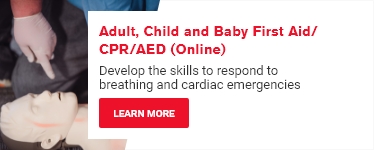In today’s world, the significance of quick and effective response to medical emergencies, particularly for children and infants, cannot be overemphasized. This guide outlines various ways to get certified in pediatric first aid, CPR, and AED training.
1. The Blended Learning Classroom: A Hybrid Model
Blended Learning is a hybrid model that combines online learning with a hands-on skills session, offering a comprehensive learning experience. This model is widely used in teaching Heartsaver Pediatric First Aid CPR AED, a course recommended for childcare workers across all 50 U.S. states.
Course Structure
The course commences with eLearning, which is followed by a hands-on skills session. The online course duration varies from 1.5 to 3 hours, while the hands-on skills session is typically completed in 2.25 hours. However, the exact duration might vary based on the course path or optional topics selected.
Accommodative Learning Tools
The online component includes interactive exercises and videos, ensuring a comprehensive learning experience. To cater to diverse learning needs, the course offers screen and text-sized options. Students also have the flexibility to navigate easily through the content and customize their learning experience, thus promoting self-paced learning.
Certification and Validity
Upon completion of the course, students are awarded the Heartsaver Pediatric First Aid CPR AED Course Completion Card, which is valid for two years. This certification acknowledges their proficiency in responding to and managing illnesses and injuries in a child or infant until professional help arrives.
2. The 2023 Child and Baby First Aid/CPR/AED Online Course: Fully Online Training
 The year 2023 has seen the introduction of a fully online course in Child and Baby First Aid/CPR/AED. This course equips learners with the necessary knowledge to handle a variety of first aid, breathing, and cardiac emergencies involving children and babies.
The year 2023 has seen the introduction of a fully online course in Child and Baby First Aid/CPR/AED. This course equips learners with the necessary knowledge to handle a variety of first aid, breathing, and cardiac emergencies involving children and babies.
Course Details
The course is accessible via various digital platforms like mobile, desktop, or tablet. It is a self-paced course, allowing students to work at their own pace and schedule. Additionally, the course offers unlimited access for two years, enabling students to revisit the course content even after completion.
Certification and Compliance
On completing the course, students need to enroll for an instructor-led skill session within 90 days to receive a valid 2-year Red Cross digital certificate, which is OSHA compliant and meets other workplace and regulatory requirements. It’s recommended to verify the location of the skills session before registering.
3. Infant CPR Anytime Training Kit: Hands-On Learning at Home
 For those wary about performing CPR on an infant, the Infant CPR Anytime Training kit by the American Heart Association (AHA) offers a practical solution.
For those wary about performing CPR on an infant, the Infant CPR Anytime Training kit by the American Heart Association (AHA) offers a practical solution.
Course Structure
This instructional DVD comes with a manikin, allowing learners to practice their technique until they’re comfortable. The 20-minute video reviews the basics of infant CPR, including how to perform resuscitation measures and handle infant choking. The hands-on practice on the infant-sized manikin ensures learners are comfortable with the anatomy of an infant.
Learning at Your Own Pace
Though this course does not provide any certification, its practical, hands-on training makes it invaluable. The kit allows learners to host their own training sessions for others, promoting widespread knowledge of infant CPR.
4. Fully Online Course: Ideal for Individuals and Organizations
For those wanting to be more prepared and feel more comfortable during emergencies involving a child or infant, a fully online course is available. This course is perfect for parents, families, daycare facilities, libraries, and individuals who frequently care for or babysit children or infants.
Course Structure
After purchasing, students will need to input their information. Approximately 15 minutes later, they will receive an email with a link to begin the class. The progress is saved as they go along. Once the student completes the learning and passes the class, a certificate of completion is issued.
Technical Requirements
For optimal learning experience, students need a high-speed internet connection and a PC or laptop that can play sound. Smartphones and tablets are not compatible. Google Chrome or Firefox are recommended for the best experience.
Conclusion
Pediatric first aid and CPR AED training is crucial for anyone who interacts with children. By pursuing the appropriate course, you can ensure that you’re prepared to handle emergencies, potentially saving a child’s life.
